The lessons history holds for the 2019 mahagathbandhan.

{ONE}
ON THE EVENING OF 10 DECEMBER 2018, a day before the results of assembly elections in five states were announced, India’s biggest opposition leaders began trickling into the Parliament House Annexe in Delhi. The politicians in attendance included Sonia and Rahul Gandhi of the Congress, Chandrababu Naidu of the Telugu Desam Party, Sitaram Yechury of the Communist Party of India (Marxist), Mamata Banerjee of the Trinamool Congress, Tejashwi Yadav of the Rashtriya Janata Dal and Arvind Kejriwal of the Aam Aadmi Party, among others. While some of these leaders are sworn political adversaries, they had been brought together for a common cause—dethroning the Bharatiya Janata Party in the 2019 Lok Sabha election.
The tension in the room was palpable. The organisers—the meeting was coordinated by Naidu—had not realised that Yechury and Banerjee could not be seen sitting next to each other, given the bitter rivalry between their parties in West Bengal. The arrangement was quietly changed and the Nationalist Congress Party’s Sharad Pawar was placed between them. However, the two multilingual rivals did exchange icy greetings in Bangla. “Kamon acchen”—how are you, Mamata asked; “Bhalo acchi”—I am fine, Yechury replied.
Representatives from the Samajwadi Party and the Bahujan Samaj Party were notably absent from the meeting. According to a senior communist leader who did not want to be named, the two Uttar Pradesh parties do not want to be seen working under Congress leadership. After the election results the next day, however, the SP’s Akhilesh Yadav tweeted in support of the coalition.
この記事は The Caravan の January 2019 版に掲載されています。
7 日間の Magzter GOLD 無料トライアルを開始して、何千もの厳選されたプレミアム ストーリー、8,500 以上の雑誌や新聞にアクセスしてください。
すでに購読者です ? サインイン
この記事は The Caravan の January 2019 版に掲載されています。
7 日間の Magzter GOLD 無料トライアルを開始して、何千もの厳選されたプレミアム ストーリー、8,500 以上の雑誌や新聞にアクセスしてください。
すでに購読者です? サインイン
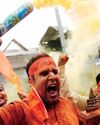
Mob Mentality
How the Modi government fuels a dangerous vigilantism

RIP TIDES
Shahidul Alam’s exploration of Bangladeshi photography and activism
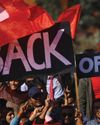
Trickle-down Effect
Nepal–India tensions have advanced from the diplomatic level to the public sphere
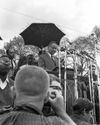
Editor's Pick
ON 23 SEPTEMBER 1950, the diplomat Ralph Bunche, seen here addressing the 1965 Selma to Montgomery March, was awarded the Nobel Peace Prize. The first black Nobel laureate, Bunche was awarded the prize for his efforts in ending the 1948 Arab–Israeli War.

Shades of The Grey
A Pune bakery rejects the rigid binaries of everyday life / Gender
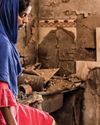
Scorched Hearths
A photographer-nurse recalls the Delhi violence
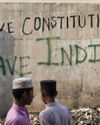
Licence to Kill
A photojournalist’s account of documenting the Delhi violence

CRIME AND PREJUDICE
The BJP and Delhi Police’s hand in the Delhi violence

Bled Dry
How India exploits health workers

Status Update
India’s telling silence on the Hagia Sophia controversy